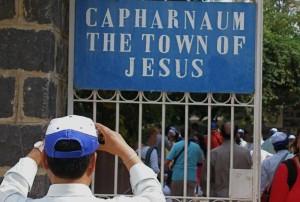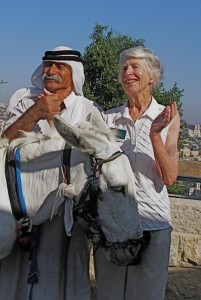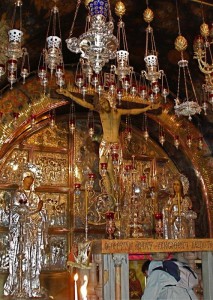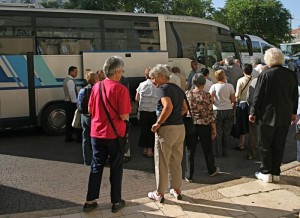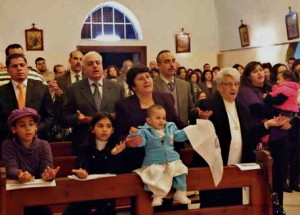A pilgrim will leave behind business concerns
A pilgrim will have an open mind
A pilgrim does not travel alone
A pilgrim respects the host country
A pilgrim is not a pious tourist. A pilgrim and a tourist may follow the same itinerary, but the pilgrim is on a sacred journey in which God is encountered through places, people and situations.
The tourist sees sights, discovers new places, learns interesting facts, takes photographs and accumulates souvenirs. The tourist returns home the same person as the one who left, save perhaps for a broadened mind.
The pilgrim gains insights and discerns new truths about oneself. The pilgrim travels with the expectation that the one who returns will not be the same person as the one who set out.
The pilgrim has his or her mind on ultimate things. He or she will not become a slave to a timetable or be distracted by gift shops. Time will be allowed for “holy idleness”. The pilgrim sets out open to the possibility of having identity and faith challenged.
The outcome of the pilgrimage will be the transformation that has taken place inside the person. The pilgrim will return with an impression imprinted on the soul, rather than in the memory of a digital camera.
A pilgrim will leave behind business concerns
The pilgrim’s mindset is established prior to departure. Once the tasks of packing bags and checking lists have been completed, the pilgrim will purposefully leave behind family and business concerns in order to be open to God’s presence throughout the pilgrimage.
A Jewish writer, Rabbi Lawrence A. Hoffman, offers a four-part formula for visiting a holy site in his book Israel: A Spiritual Travel Guide (Jewish Lights Publishing):
1. Beforehand, anticipate what you are going to see by reading about it.
2. As you get there, approach the site with all the expectation you can muster, as if it is the only spot on earth that matters.
3. When you arrive, acknowledge its sacred presence, taking some time to be alone with the site, yourself and God.
4. After you leave, record your afterthought about what you experienced.
In the words of the Rev. Peter J. Miano, founder of the Society for Biblical Studies, “Tourists pass through places, but pilgrims let places pass through them, allowing their hearts to be changed”.
A pilgrim will have an open mind
The happiest pilgrims are the most relaxed. They don’t expect everything to go smoothly. They don’t get stressed over delays, itinerary changes or bad weather. They tolerate different people, customs and foods with an open mind.
The tourist may be hasty and impatient, mentally checking off sights on a to-do list. The pilgrim will be patient and considerate, remembering that the guide and tour leader are concerned for the welfare of the entire group.
The pilgrim will not be disconcerted to find that a treasured site is nothing like the picture in his or her mind. The pilgrim will not be inhibited by the ostentatious ornamentation of some holy places, but will focus on the meaning of the place.
The pilgrim will try not to be distracted when personal reflections are interrupted by another group’s singing, a tour guide’s commentary or tourists chatting.
A pilgrim does not travel alone
Whether in a group or not, the pilgrim does not travel alone. The pilgrim is open to encounters with others that build relationships. The tourist may find companionship, but the pilgrim experiences community.
The pilgrim prays for the success of the pilgrimage and for other members of the group. He or she makes an effort to accept other people’s different spiritualities and others’ need for quiet times.
Pilgrims are open to sharing their personal faith stories (though tactfully in sensitive Middle East situations) and to appreciating the faith of others.
The tourist sees religious buildings as objects of historical or architectural interest. The pilgrim sees them as shrines of a faith that lives on today.
The Christian pilgrim in the Holy Land is aware that the first Christians were simple fishermen and villagers scattered around modern-day Israel, Palestine, and Jordan. Descendants of early Christians live in these places, still following the Christian faith. These Christians are called the “Living Stones” of the Holy Land. Joining them in discussion and worship is an act of solidarity for today’s pilgrim.
A pilgrim respects the host country
The pilgrim treads lightly on sacred ground and on the planet. The tourist may unknowingly trample on holy ground or intrude noisily into sacred stillness. The pilgrim is sensitive and respectful.
The pilgrim does not waste water or electricity, conscious that these are precious resources in the Holy Land. The pilgrim disposes of rubbish appropriately, no matter how much litter lies around.
The pilgrim respects the host country and tries to learn about its culture — not just as a spectator at an evening “cultural performance”. The pilgrim seeks to learn standard greetings in the local language.
The pilgrim learns tolerance towards persistent traders, accepting that they are just trying to make a living. The pilgrim accepts the presence of beggars and the ubiquitous expectation of tips, realising that pay rates are low.
The pilgrim may even ponder an 11th-century preacher’s injunction to European pilgrims: “The pilgrim may bring with him no money at all, except perhaps to distribute it to the poor on the road . . . . the pilgrim who dies on the road with money in his pocket is permanently excluded from the kingdom of heaven.”
• A Pilgrim’s Prayer: Christian writer John M. Haffert sums up the distinction between a pilgrim and a tourist.
• Tourists: Hebrew poet Yehuda Amichai gives a Jewish reflection on pilgrims and tourists.
• Pilgrim’s Prayer: Stephen Doyle offers a prayer for Christian pilgrims, in The Pilgrim’s New Guide to the Holy Land (The Liturgical Press, 1985).
• A Pilgrim’s Ten Commandments: Wit and wisdom from an anonymous author.

